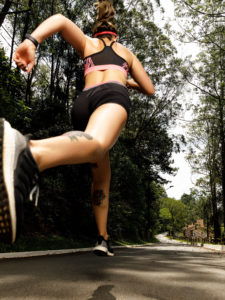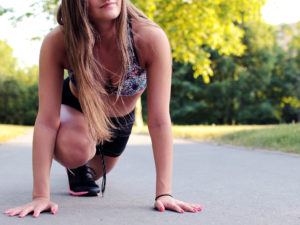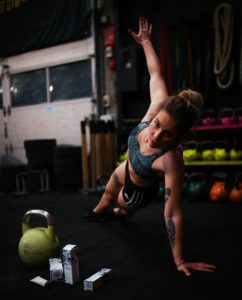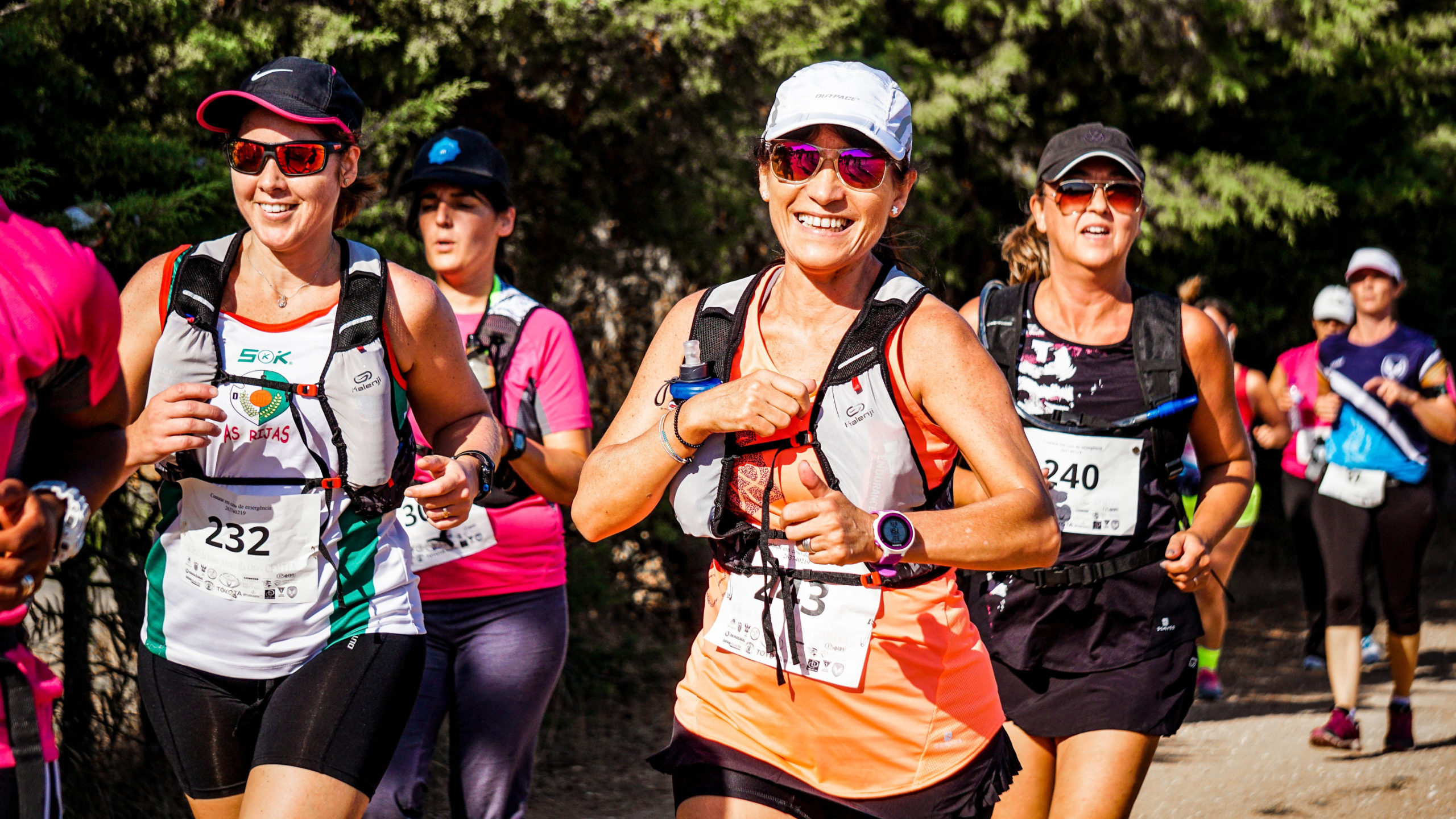Whether you’re hitting the treadmill, pavement, or trail we have some great tips to improve your speed. We have also created a list of exercise catalog recommendations for everything from running shoes and clothes to the best running gear. Remember how difficult it was to run that first full mile without stopping? Maybe you chanted to yourself, “One more step. One more step”. You’ve gotten over the first hump and began to build endurance, but you’re tired of always being the last one in.
“How do you get faster in running?” is a question asked by almost every runner because pace plateaus when all focus is placed on building endurance. Now it’s time to change your tune from the “one more step” channel to “Run faster. Faster. Faster.” Here’s how.
1. The First Step to Running Faster is to Set a Realistic Goal

We all hear about the magical 4-minute mile, but it’s not realistic to think you can leapfrog from a 12 minute+ mile to 4 overnight. Many runners never get that fast, but that doesn’t stop them from improving. Look at the amount of time you want to shave off in terms of seconds not minutes.
You may surprise yourself and improve quicker than expected, but don’t set yourself up to fail by making the goal too ambitious. Set a realistic goal like running a mile 20 seconds faster than the last time, and shave time from there.
2. Change Your Mind Set

You didn’t have the impression that running would get much easier, did you? Changing up the routine to improve your pace will add variety to your routine, which will make it interesting, maybe even fun, but not easy. If your workout feels easy, you’re not challenging yourself enough.
The answers to how do you get faster in running is about toughening your mental state and your body.
3. Fartleks (Swedish for Speed Play)

Doing fartleks is a classic way for beginners and experienced runners to kick their fitness level up a notch. The idea behind fartleks is to get runners back to a place where running feels free and fearless. Beginners tend to panic at the feeling of their heart rate rising and stop cold until their breathing and heart rate feel “normal”.
The next time you run, increase your pace in spurts. Forget about how fast and far you’re going, and get in tune with your body. Slow down when it feels uncomfortable. Do about 5 spurts during two runs a week and your body will begin to feel comfortable with a quicker pace.
After spending a few weeks working casual fartleks into your workout, try to add more structure. One way to do this, According to Runner’s World, is to run hard for 1 minute, then easy for 2, and repeat for about 21 minutes. This enables you to continuously push your limits in safe increments.
4. Take Smaller Steps and More of Them

In the book Born to Run author Christopher McDougall shares tips from the fastest distance runners in the world, the Tarahumara. One of the main differences McDougall notes is that the Tarahumara take small steps when they run.
Count the number of steps you take in one minute. Make a conscious effort to increase your steps per minute by one-third.
5. Head for the Hills

Hill workouts offer all the benefits of an intense workout on a flat path, minus the harsh force of impact on your joints. This lowers the possibility of injuring yourself, and will boost your overall kick in just a few weeks.
Choose running trails that have a few hills and run quicker on these segments. Also, add a few 30-second, then 60-second hill sprints once a week.
6. You Want to Know How to Run faster? Cross-Train

Cross training strengthens muscles that don’t get as much of a workout when you run. Explosive exercises like skipping and jumping trains your elastic running muscles to absorb the impact and rebound quickly. Minimizing the length of footfalls by quickening your bounce is bound to make you faster.
Incorporate jumping rope and other plyometrics into your strength training about once a week. Bounce on one foot, then the other, and then both, trying to get higher each time. Jump from a lunge or squat position and land on the opposite foot position.
7. Upgrade your running Gear
It doesn’t matter if you are a beginner or pro, upgrading your gear can be the inspiration you need to work harder towards your goal. Let’s face it, there is nothing like a new pair of running shoes or a great piece of tech clothing to motivate you! Here are a few of our favorite catalogs for you to check out with great running gear and exercise equipment.
What works for runner doesn’t necessarily work for all so be patient and keep experimenting until you find what works for you. That you’re wondering how do you get faster in running shows you have the will it takes to get to the front of the pack.
As you play with the routine, stay consistent with your frequency and mileage so you don’t unintentionally take steps back. There’s nothing a runner loathes more than backtracking.

